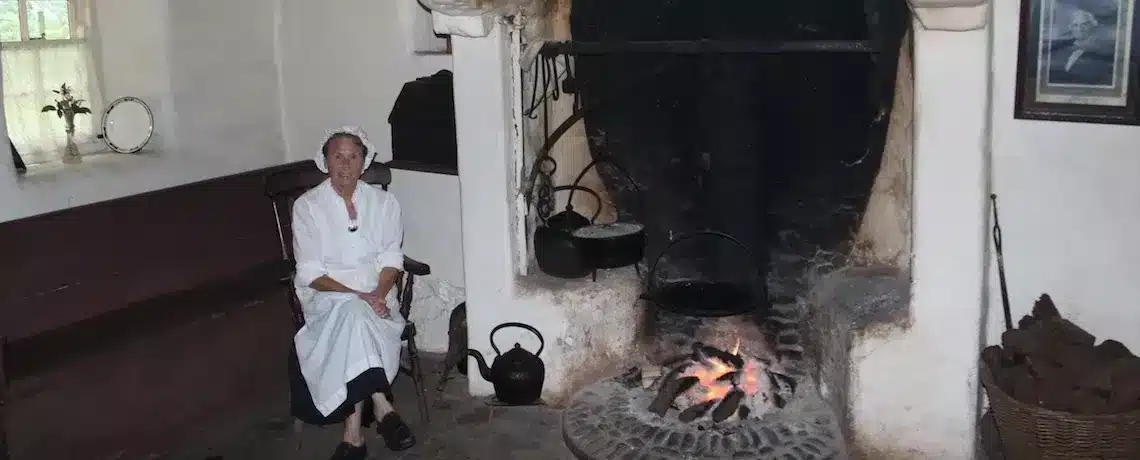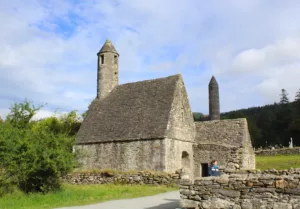Ulster Scots and the First Great Migration
By 1775, about 200,000 men and women from the counties of Ulster had migrated to the colonies of north America. About half were indentured servants and the majority were Presbyterian of Scottish ancestry. When they arrived they were simply known as Irish – that is how they saw themselves - and later became labelled as "Scotch-Irish".

Do you own a piece of Linen? How about Irish Linen? Maybe a nice tablecloth or even a cool dress or nice shirt? A few weeks back, I received the following email from Joan Adams:
My ancestor, William Irwin, was born in County Antrim about 1703 and immigrated about 1741. I have long wanted to find out more about him, but I don’t really know where to start.
The date of 1741 caught my attention immediately. You see, that was a very difficult year for everyone on the island of Ireland.
Ulster Linen and the Start of a Great Migration.
Flax was grown in Ireland, and linen was woven from this flax, for many centuries. However, the quality and sizing of this linen meant it was never in demand from the larger markets across the UK and Europe. From the middle of the 1600s, the “Plantation of Ulster” was in full flight. Tenant farmers were enticed from Scotland and the border counties of England to land taken from the native Irish across the Ulster counties of Antrim, Down, Armagh, Derry, Monaghan, Cavan, Tyrone and Donegal.
These immigrants brought with them a skillset that was capable of manufacturing linen suitable for sale across the markets of Europe. The majority of these weavers and farmers put parts of their farms aside for the growing of flax. By the early 1700s, Huguenots were offered freedom from religious persecution on the continent and brought even more sophisticated weaving and manufacturing techniques. Shortly after, the weaving of linen became the main export activity of Counties Antrim, Armagh, Down, Monaghan, Derry, Tyrone and Cavan – and accounted for 25% of all exports from Ireland.
While the flax used for manufacturing linen was grown across Ulster, the seed used for the flax was imported from the Baltic states up to the early 1700s. Then, in 1731, the colonies of north America were permitted to export flax-seed back to Ireland and the United Kingdom for the first time.
This seed from the colonies was in high demand across the farms of Ulster. Also, as the population of the colonies increased, so too did their demand for fine linen from the weavers of Ireland. As a result, ships arrived from the colonies (particularly from Pennsylvania) to the ports of Derry, Newry, Belfast and Coleraine loaded up with flaxseed for feeding into the local linen industry. They then stocked up with a return boatload of fine linen for the growing markets in the colonies.
However, the ships taking a smaller return load of this fine and light linen – and the owners looked around for additional cargo to take to the colonies on their sparsely-loaded ships. The answer was people – new emigrants from the north of Ireland to colonies. The shipping companies went into strong competition with each other to entice the tenant farmers of Ulster to leave their homes of several generations and strike off for a new life in the colonies of north America.
But, why would these (mainly Protestant) farmers want to leave their established homes in the province of Ulster for such an uncertain future?
An Untold Story – The Famine of 1741.
A combination of factors gave them motive to emigrate to the colonies with the risk of losing so much. Many of the original “planters” from the north of England and Scotland were attracted to Ulster by the promise of fertile lands and steady rents. They were tenant farmers on land that was owned by the larger (and mostly absent) English and Scottish lords. As the population and economic stability of Ulster increased, it was accompanied by a steady increase of rents (what became known as “rent-racking”).
A second factor made it nearly impossible to pay these increasing rents. Nowadays, our history tells us mostly of Great Irish Famine of the 1840s. However, the years between 1726 and 1741 brought a number of droughts and frosts – with resulting food shortages that hit famine levels. In 1741 alone, about 20% of the population of the island of Ireland died through famine and related sickness. 1741 was also the year that Joan Adam’s ancestor – William Irwin – left his life in Ulster for the colonies of north America. He must have a left a very harsh life behind him that year.
By 1775, about 200,000 men and women from the counties of Ulster had migrated to the colonies of north America. About half of these were indentured servants and the majority were Presbyterian of Scottish ancestry. When they arrived they were simply known as Irish – that is how they saw themselves – and later became labelled as “Scotch-Irish”.
Their colonial attitude and skills made them suitable for living on frontiers of the colonies – western Pennsylvania, the Carolinas and on to Kentucky and Tennessee, where you will still find their ancestors today. This great migration from Ulster to the colonies came to an abrupt end in 1776 with the American Revolution.
When I started the Letter from Ireland – and began a conversation with so many of our readers, I was surprised to find that as many as 20% of all of our readers were descendants of these “Ulster-Scots. Men and women who left the counties of Ulster through the 1700s for a new life in the colonies of north America. Readers like Joan Adams who asked her question about William Irving at the top of the letter.
Do you have an Ulster Scots ancestor in your family tree? Do let us know below.
That’s it for this week – as always, do feel free to leave a comment below to say hello, share an Irish surname or story in your family.
Slán for now – Mike and Carina.







Only Plus Members can comment - Join Now
If you already have an account sign in here.